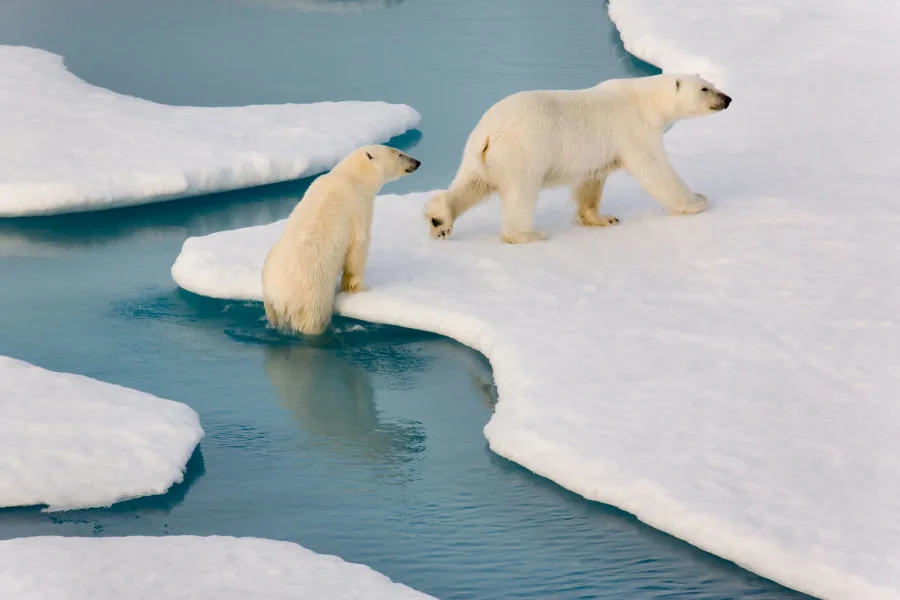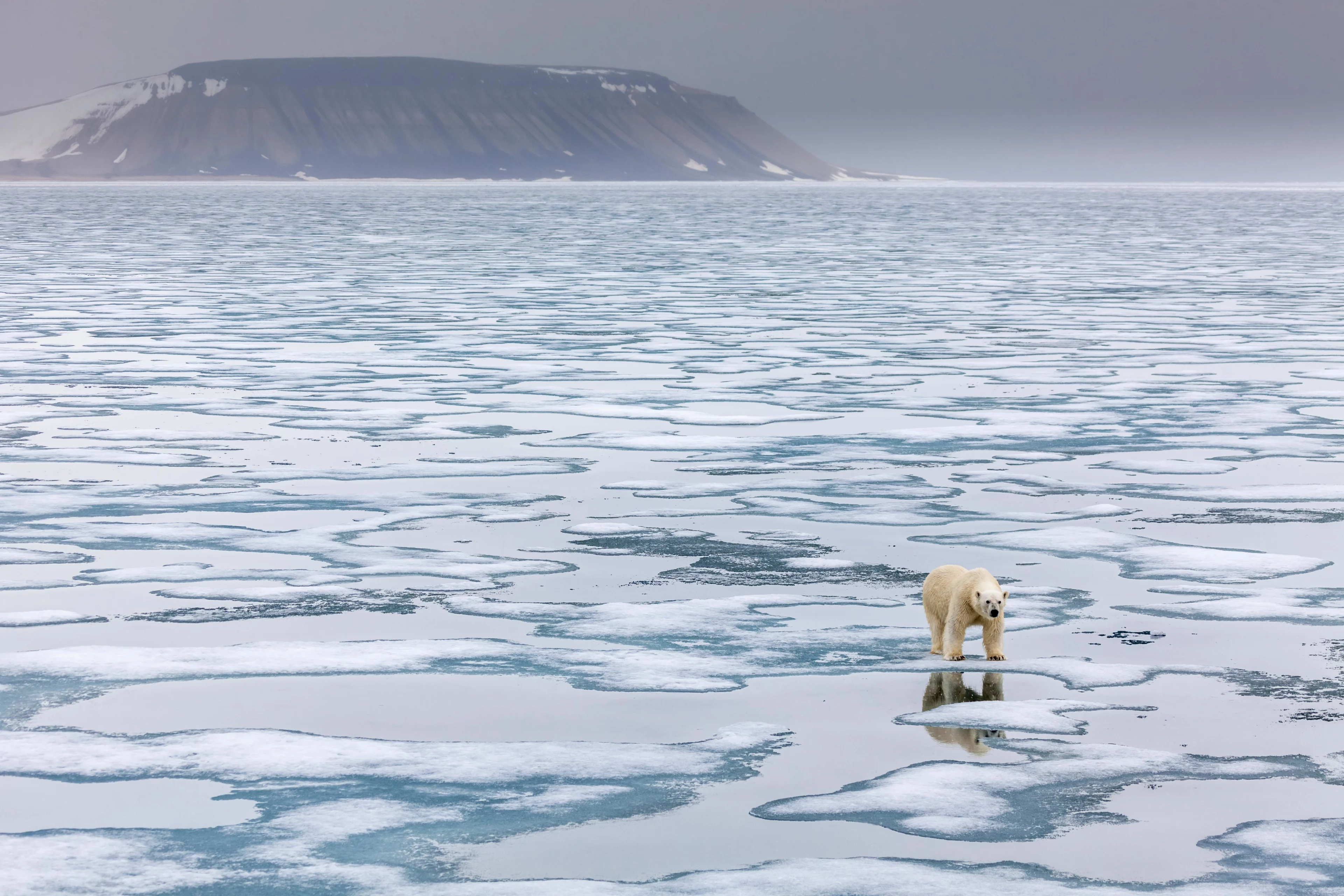
Inbreeding occurring in polar bears as their habitat melts away
The genetic diversity of polar bears is declining due to the effects of climate change, a new study finds.
The research revealed that there has been as much as a 10 per cent loss of genetic diversity in the polar bear populations on the Svalbard Archipelago, Norway, since 1996. In this region, which has been impacted by a rapid reduction in sea ice in the Arctic Barents Sea, the polar bears have turned to inbreeding, due to a limited number of mates.
“Our study is the first to assess microevolutionary and ecological processes governing the degree and distribution of genetic variation in polar bears of the Svalbard region,” lead author Dr. Simo N. Maduna from the Norwegian Institute of Bioeconomy Research, told The Weather Network.
“It afforded us an opportunity to obtain the much-needed baseline information on the levels of genetic diversity for polar bears during a period of rapid sea ice loss,” he said.
While climate change continues to affect ecosystems across the globe, the Arctic has been hardest hit as rates of warming have been higher at the poles. The most significant impact of this increased polar warming is the loss of seasonal sea ice, which has serious consequences for all ice-dependent species, such as Adelie penguins, Baltic ringed seals, and polar bears.
Sea ice loss affects the breeding and feeding habits of polar bears. On the Svalbard Archipelago, the study explained, it is habitat fragmentation caused by loss of sea ice in the Arctic Barents Sea that has led to an increase in inbreeding among the local polar bear population, in the past two generations especially.
“It was astonishing to find such compelling evidence of loss of genetic diversity and gene flow in only about 20 years. It is clear that the ongoing decline in sea-ice extent is a climate-induced environmental driver of the decline of local genetic diversity and exchange among localities,” Maduna said.

Polar bear in Norway's Svalbard archipelago. (Credit: Patrick J. Endres/Getty Images)
SEE ALSO: Scientists observe animals "shape-shifting" in response to climate change
The research, published by the Royal Society, noted that the resulting decrease in genetic diversity could pose “an additional level of adversity” for the polar bears, reducing their ability to adapt and respond to “anthropogenic pressures, pathogen outbreaks, and environmental change.”
Polar bears also rely on the sea ice to hunt their primary prey, seals. According to Polar Bears International, polar bears are a “highly specialized” predator of ice seals, adapted specifically to stalk seals on ice, where they are stealthy and quick. While they do take in other sources of food — including birds, eggs, and small mammals — these species do not provide enough calories to sustain population levels of polar bears.
As a result, some researchers have begun reporting on incidents of cannibalism among starving Arctic polar bears. While cannibalism among polar bears is not uncommon, Senior scientist with the Russian Academy of Sciences Ilya Mordvintsev has noted a recent increase in these cases of intraspecific predation.
Their dependence on a fragmenting habitat, the melting sea ice, has left polar bears especially at risk. Divided into 19 discrete populations across the Arctic, polar bears may number as low as 16,000 globally, and most groups, including the bears of Svalbard are listed as vulnerable or threatened.
The Canadian population of polar bears on the western shores of Hudson Bay are notably vulnerable, their numbers shrinking by a third since the 1990s, due largely to the reduced expanse of sea ice on the bay.
These urgent threats will result in an “elevated risk of extinction,” according to the study. The researchers noted that further sea ice loss will cause “the continued erosion of local genetic diversity” and “increased isolation” between polar bear groups. They call for more “genetic monitoring” and the development of “adaptive management strategies” for ice-dependent species like the polar bears.
“It is our hope that our findings contribute towards policy making and in the revising of management plans for the conservation of genetic diversity in this iconic species,“ Maduna said.






